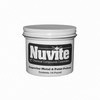LPG
Q: Are aluminum tanks standard on Airstreams?
A: Actually the silver painted galvanized steel tanks were the standard during the vintage years. The newer aluminum tanks are finding favor due to their polishability and lightweight – plus they don’t rust.
Q: Why are older tanks selling so cheap right now?
A: After April 2002, LP dealers can no longer fill the tanks unless the valve has Overpressure Devices (OPD), recognizable by an “OPD” on the valve. To convert and test older tanks costs about $35 to $60. These old tanks can have new life.
Q: I’ve heard the horizontal tanks used on 1940’s trailers are exempt – is that true?
A: Yes, these horizontal tanks mounted on the tongue were considered permanent installations and were certified by the ASME as such. They were made by Manchester, and are still available today, primarily used in Motorhomes.
Q: My LPG lines are routed outside the belly skin. Is this normal?
A: Yes. LPG lines are permitted to go vertically up through the underbelly and then through the floor, but there cannot be any connections within the floor to belly area. If you had an LPG leak above the underbelly and below the floor, all that gas would be trapped.
It is also for this reason that LP lines are not routed within the trailer if at all possible. As LPG is heavy, should a leak occur, it is better to have the gas settle away from your trailer than build-up inside, setting up a spectacular special effects explosion.
Q: How is an LP gas system tested after replacement of gas lines or appliances?
A: The appropriate method for testing an RV LPG system is to measure pressure with either a calibrated PSI gauge or WCI wet stick. The measurement should be taken at an appliance (stove burner) with approximately 50 % of the total coach volume being used, such as a furnace or water heater on at the same time. Static pressure should be no higher than 15 WCI (water column inches), which is about 0.2 PSI. Dynamic pressure should be no lower than 11 Inches of Water (WCI), about 0.15 PSI.
A leak test of the entire system is best done after checking the pressure. Shut off the tank valves. Using one of the appliance valves, lower the pressure to approximately 8 WCI. Allow the coach to sit for 15 minutes or so. No change in pressure is a good system. To track down the leak, use a leak detect solution along the lines and fitting to find the minute gas bubbles.
Q: Do I need to change the regulator on my LP tanks?
A: The short answer is don’t replace it unless there is serious damage to it. If in doubt, have it tested by a LPG dealer (see above). Airstream usually used the highest quality regulator available at the time. The generic $50 replacements from RV centers are poor substitutes for the originals. Check your tubing and hoses, replacing any that are cracked. One thing to watch out for is the low end regulators and rubber hoses. Due to the longevity of Airstreams, it not a good idea to use these, as UV will weaken both rather quickly, opt instead for the better brands.
Q: How often do I need to have my tanks recertified?
A: The cylinders need to be recertified and stamped after the first 12 years and then either visually every 5 years after that or hydrostatically every 10 years.








